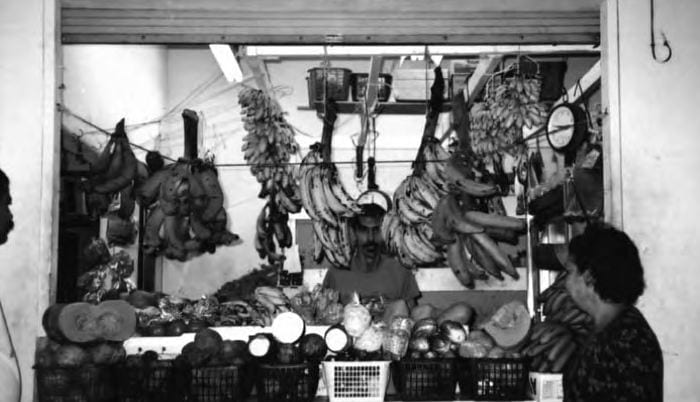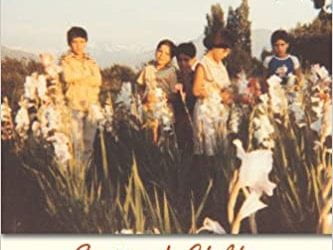The Struggle of Piñones
Saving Ancestral Houses and the Environment
Maricruz Rivera-Clemente has shown pride in her African heritage ever since she was a child by dancing the Puerto Rican national folkloric dances, bomba and plena. Today, students practice the dances in her office in Piñones, just outside San Juan.
This is not a dancing school, but a community watchdog organization called Corporación Piñones Se Integra (COPI). Rivera-Clemente, 37, founded the community coalition in 1999 to educate people about the importance of their African heritage as a weapon to preserve the neighborhood and the environment—both threatened by developers.
Piñones and its coveted oceanfront—the only beach area close to the airport still not developed by the tourism industry—has been disputed since the late 1960s, generating a historical clash between residents and tourism industry representatives.
Rivera-Clemente said that residents were about to lose their land when developments for hotels, casinos, luxury condominiums and residences were proposed for the Vacia Talega sector of Piñones. The proposed development would have also disturbed a natural area near the Piñones Mangrove Forest, added Carmen Guerrero, environmental planner and consultant for Piñones coalitions.
“They threaten us with the destruction of the Piñones Mangrove Forest and the expropriation of the families,” said Rivera-Clemente in a telephone interview.
A village of nearly 2,300 residents in the township of Loiza, Piñones is located on a floating islet. The metropolitan community of Isla Verde and the Luís Muñoz Marín International Airport surround Piñones, which includes two lagoons and Puerto Rico’s largest mangrove forest.
Joel Katz, PFZ Properties’ president, saw a great opportunity in an area with such natural beauty. He was one of the businesspersons to propose a project to attract tourists. Costa Serena, a development of around 1,000 units for Piñones, included a condominium-hotel and 64 residences, according to Caribbean Business Magazine in 2002.
He wanted to merge the development with microbusinesses such as food concessions, arts and craft kiosks that could blend in with the neighborhood’s character. The project would have attracted money and jobs for the impoverished area and created over 4,000 jobs and millions in tax revenue, according to the publication. Katz declined an interview, saying that he is involved in a lawsuit on this matter.
The business plan, however, had more challenges than its size, according to Edgardo González, director of the Department of Forest Service.
“Piñones area is very sensitive,” said González over the phone. “It is a wetland area.”
“That construction would have been inside a system that is practically fragile,” Gonzalez explained. Disturbing this area by building structures, highways or parking lots “could be detrimental for the ecological area,” he said.
He also worries about the danger such a project could pose to new residents because of its proximity to the shore. “The area would have problems in case of hurricanes,” he noted.
In addition, FEMA maps indicate that building large-scale projects in a coastal flood zone like Piñones would pose a risk to visitors.
“The preliminary maps show it should be a costal high hazard area,” said Paul Weberg, a New York-based FEMA engineer, “Developers must build anything on piles.”
Puerto Rico Governor Aníbal Acevedo Vila disagrees. He told El Vocero newspaper last year that the disputed Piñones’ land “has a zoning that permits tourist development.” When contacted to confirm this published statement, the governor did not return phone calls or emails.
But Rivera-Clemente is convinced that the land belongs to the residents, and they should not be bothered. The local black militia earned the land when they protected Puerto Rico from invasion, she said.
“The land of Piñones … belong to us, the residents. … The Spanish crown gave them [to us] in 1797 because we contributed to the battle against the English.”
However, Jalil Sued-Badillo, Puerto Rican historian, communicated via e-mail that he does not know of any document that would validate such claim.
This deep-rooted community dates back to the 1600s, when it served as a safe haven for runaway blacks and Taino slaves, said Rivera-Clemente.
Sued-Badillo, author of Puerto Rico Negro, said that the family of Francisco Piñon, a black gold miner who owned eleven black slaves in the area in 1530 stayed in Piñones and inspired the neighborhood name.
“Document references later in that century record that the family established in Piñones and the [area] maintains it’s name until today,” the historian said.
However, the government disputes the residents’ ownership of these lands, and, according to Rivera-Clemente, started creating difficulties so they would eventually give up the area.
“Since they wanted Piñones for other types of development, they denied the residents [water and sewer] services,” she contends.
She said the water company sent them water a few days a week. Many people canceled their water services and used the underground water springs because the system was not reliable. Guerrero, the environmental planner, believes that improvements to Piñones’ infrastructure depended on Costa Serena’s approval.
The residents did not accept Costa Serena and reportedly none of them intend to move. Rivera-Clemente, however, worries about other pending projects.
Despite the odds, she is optimistic about the future for young residents. She thinks that eco-tourism managed by micro enterprises such as kayaking and bicycle rentals could bring money and new jobs without relocating the community and menacing the environment.
“Piñones is a big family, we all have blood ties.”
She believes that in a few years her organization will be able to help the community financially, by training the children and developing an Afro-Puerto Rican show called “El Ballet Majestad Negra”.
“We do not have to destroy natural resources to make money,” she concludes. The bomba music pulsates throughout the one room community center, which serves also as an office, as her students continue to practice.
Spring 2008, Volume VII, Number 3
Margarita Persico is a graduate student in Harvard Extension School’s Master in Journalism Program. She is Puerto Rican. She is an avid genealogist and photographer who enjoys yoga, hiking, traveling, and maintains a personal blog with public commentaries on various topics and films (www.margarita.vox.com).
Related Articles
Santiago’s Children
There are five reasons I jumped at the chance to write a preface to Steve Reifenberg’s memoir about living and working in the early 1980s in a home for Chilean children who would otherwise…
Crossings: Photographs From the U.S.-Mexico Border
While photographing in areas of the Amazon, Alex Webb felt as if he “had stepped into the setting of a Mario Vargas Llosa or Gabriel García Márquez novel because of the sense of magic…
Making a Difference: The Bolivian Street Children Project
At 12,000 feet, you can feel the effects of the altitude every step you take. But a group of seven women from Harvard did not let that stop them from two months of in-depth work in the world’s…





